Vision 2025 - National Research Centre for Grapes
Vision 2025 - National Research Centre for Grapes
Vision 2025 - National Research Centre for Grapes
Create successful ePaper yourself
Turn your PDF publications into a flip-book with our unique Google optimized e-Paper software.
• Over dependence on single rootstock and selected commercial variety is posing problem in<br />
reducing yield, quality and increasing disease and pest incidence.<br />
• Introduction of planting material without proper certification may lead to new disease and<br />
pest incidence with reduced yield.<br />
• Unpredicted weather during berry development stage may reduce yield and quality due to<br />
increased pest and disease incidence.<br />
• Competition from Chile, South Africa and Brazil and new emerging countries is the most<br />
potential threat to grape exports from India during March / April due to poorer quality of<br />
Indian grapes.<br />
7. PERSPECTIVE<br />
In the last half a century, commercial grape cultivation has shown a slow and steady growth in area<br />
and production of grapes <strong>for</strong> table purpose and <strong>for</strong> raisin making. The high cost of cultivation, poor<br />
quality of fruits, limited markets and risk in cultivation due to adverse environmental conditions, has<br />
been the major impediment in growth of table grapes. However, the last decade has seen a very sharp<br />
rise in cultivation of wine grape varieties <strong>for</strong> wine making.<br />
The industry needs research support <strong>for</strong> new improved table, raisin and wine varieties with better<br />
stress tolerance, technologies <strong>for</strong> sustainable quality production <strong>for</strong> various end uses at economical<br />
prices, post harvest technologies <strong>for</strong> value addition and in view of the growing demands <strong>for</strong> organic<br />
products, production of grapes with minimum chemical inputs.<br />
Considering the research carried out in the past, it's impact and output, lessons learnt from the<br />
analysis of all the considered inputs and the scenario and SWOT analysis of grape sector in the<br />
country, following are the salient features of the perspective plan <strong>for</strong> research in grape:<br />
1. Emphasis on development of package of practices <strong>for</strong> wine grapes and standardization of<br />
enological techniques.<br />
2. Production of elite, true to type, disease free planting material of commercially important<br />
varieties and rootstocks<br />
3. Reduce in the total cost of production of grapes considering training system, material used <strong>for</strong><br />
training system, enhanced efficiency of various inputs viz. fertilizers, water, agrochemicals and<br />
introduction of modern tools, machines and other means to reduce the labour cost and their<br />
drudgery.<br />
4. Sustain the productivity of grapes under the various abiotic and biotic stresses.<br />
5. Enhanced stress on the quality of fresh fruits and its processed products in the context of national<br />
and international quality standards with due consideration to the economics of production.<br />
6. Minimizing dependence on agrochemicals with more use of permitted organic sources of<br />
bioregulators, nutrients and pesticides to promote eco-friendly / organic viticulture.<br />
7. Extending cultivation of grapes in potential non traditional areas thus increasing per capita<br />
availability of grapes in the country and improving economic status of the farmers<br />
8. Promoting off season cultivation of grapes to catch the lean market period and value addition <strong>for</strong><br />
better price realization<br />
27





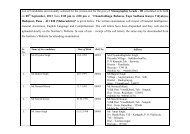
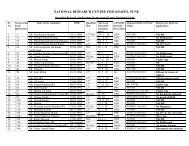

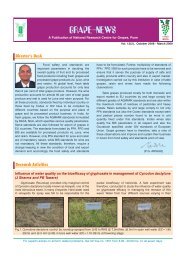

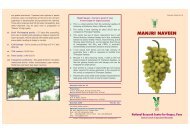
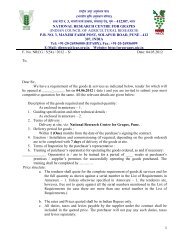



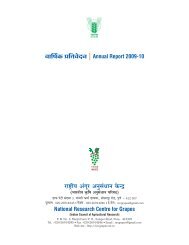
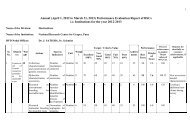
![mj]mJ{V cmcH$m{irM{ (_mBQâ¤>g) oZ`ÃÃU](https://img.yumpu.com/33367555/1/190x127/mjmjv-cmchmirm-mbqag-ozaau.jpg?quality=85)